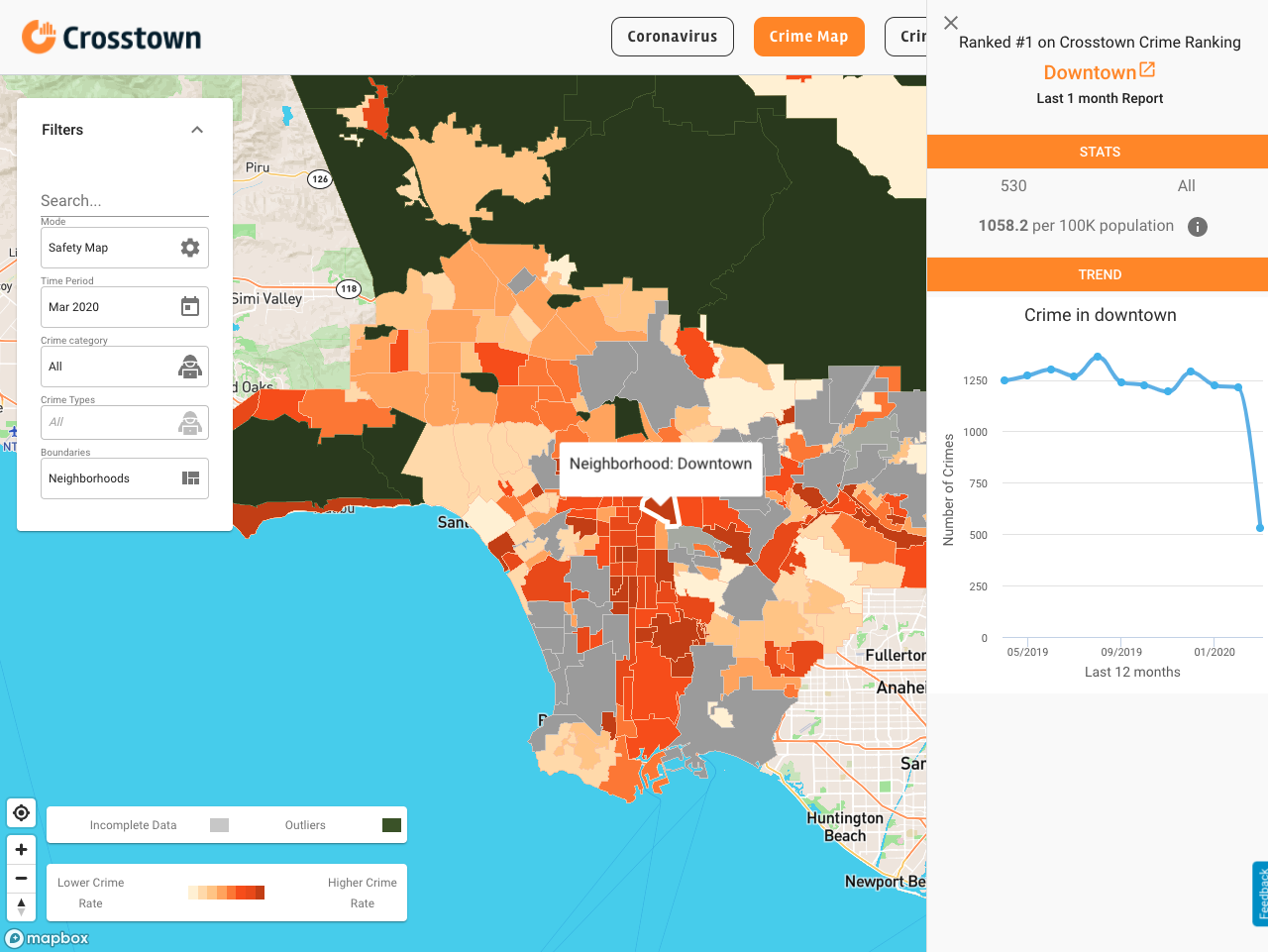Your streetlight went dark. Could a new tariff help?
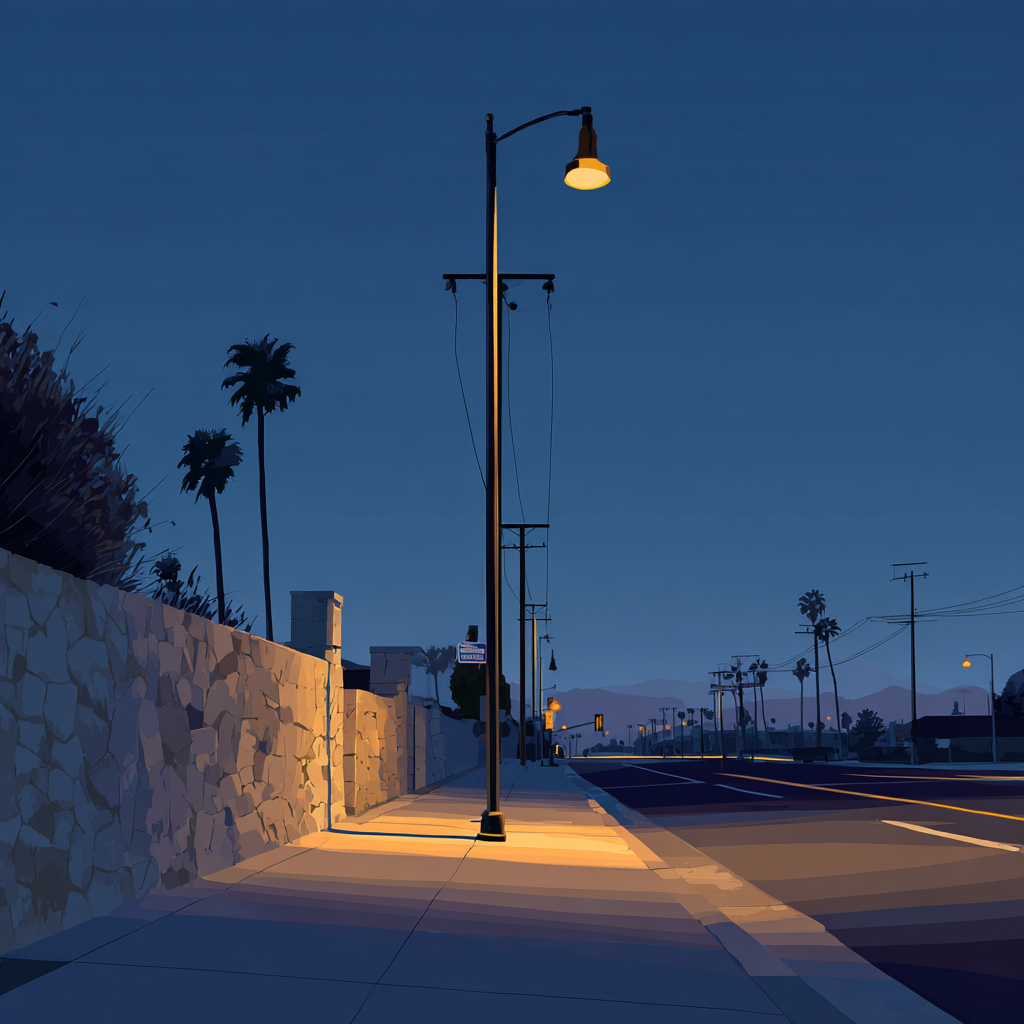
For three years, law enforcement across Southern California have been fighting thieves who rip copper wire from streetlights, leaving roads and sometimes entire neighborhoods dark. Now, help may be coming from an unlikely source: President Donald Trump’s off-again-on-again tariff policy.
On July 30, Trump shocked commodities markets by announcing that the U.S. would only impose 50% levies on semi-finished copper products such as pipes and wires. This was a major step back from the 50% tariffs on all forms of copper that Trump had previously threatened. Copper prices promptly crashed, and are down around 22% from where they were a week ago.
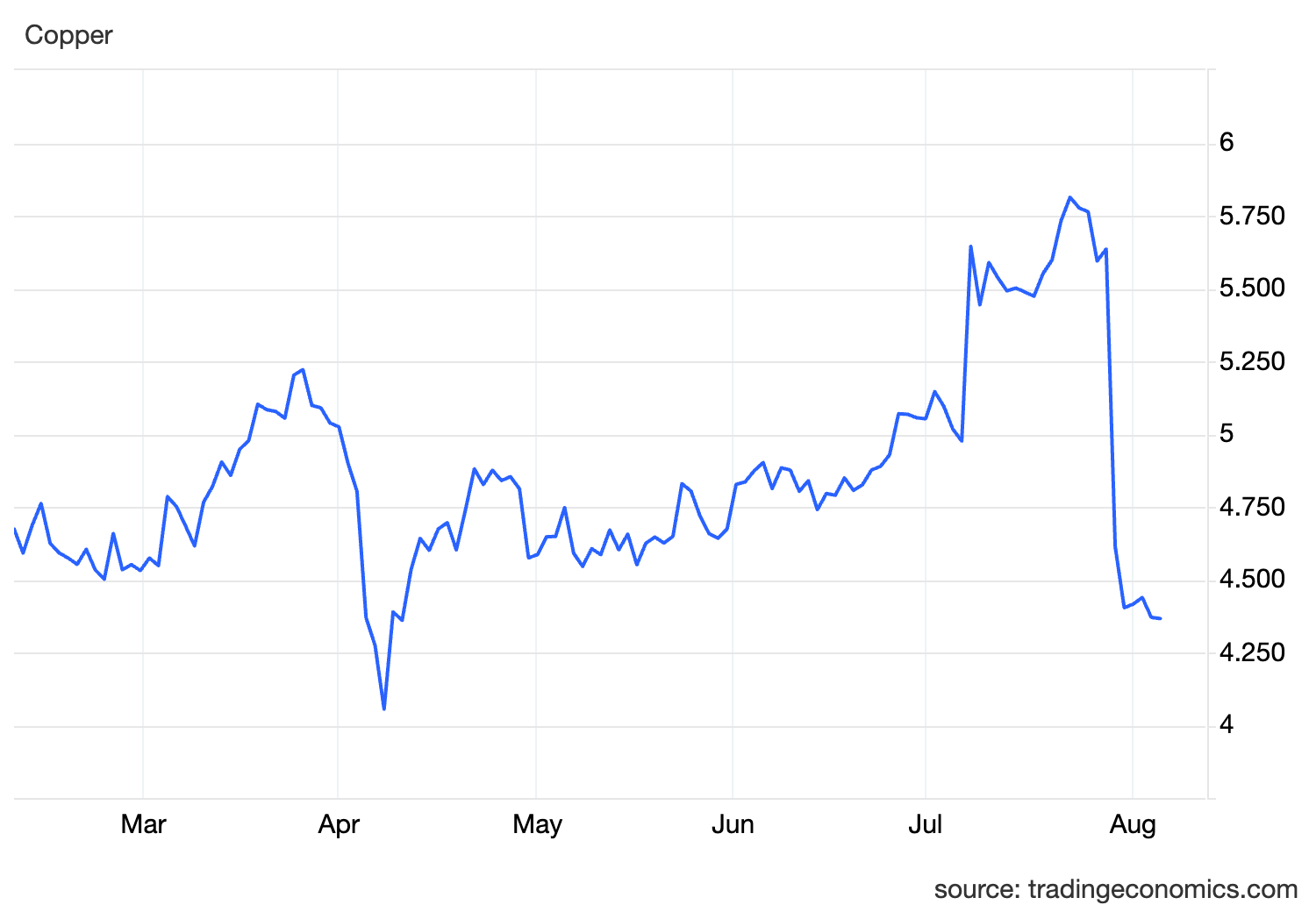
Now, the question is whether the collapse in copper prices will also bring down theft of copper wire.
Several years ago, Los Angeles weathered a similar problem when catalytic converter theft surged, driven by a runup in prices of cadmium, palladium and other metals contained in the part. One research study found that, in California, a 10% increase in metal prices correlated with a 20% jump in thefts. With the recent collapse of copper prices, it will soon be evident if the opposite also holds true.
Unwired
In Los Angeles, copper wire theft began to rise in the summer of 2023. Last year, the city logged 46,139 MyLA311 streetlight complaints, the most ever. That included some high-profile thefts, such as ripping all the wire from the 6th Street Bridge’s so-called “ribbon of light,” leaving it completely dark. A theft of copper wire last year left seniors in South Los Angeles without working landlines. In March The Eastsider reported on a sharp rise in darkened streetlights in Silver Lake. In April KTLA detailed rampant thefts in Los Feliz.
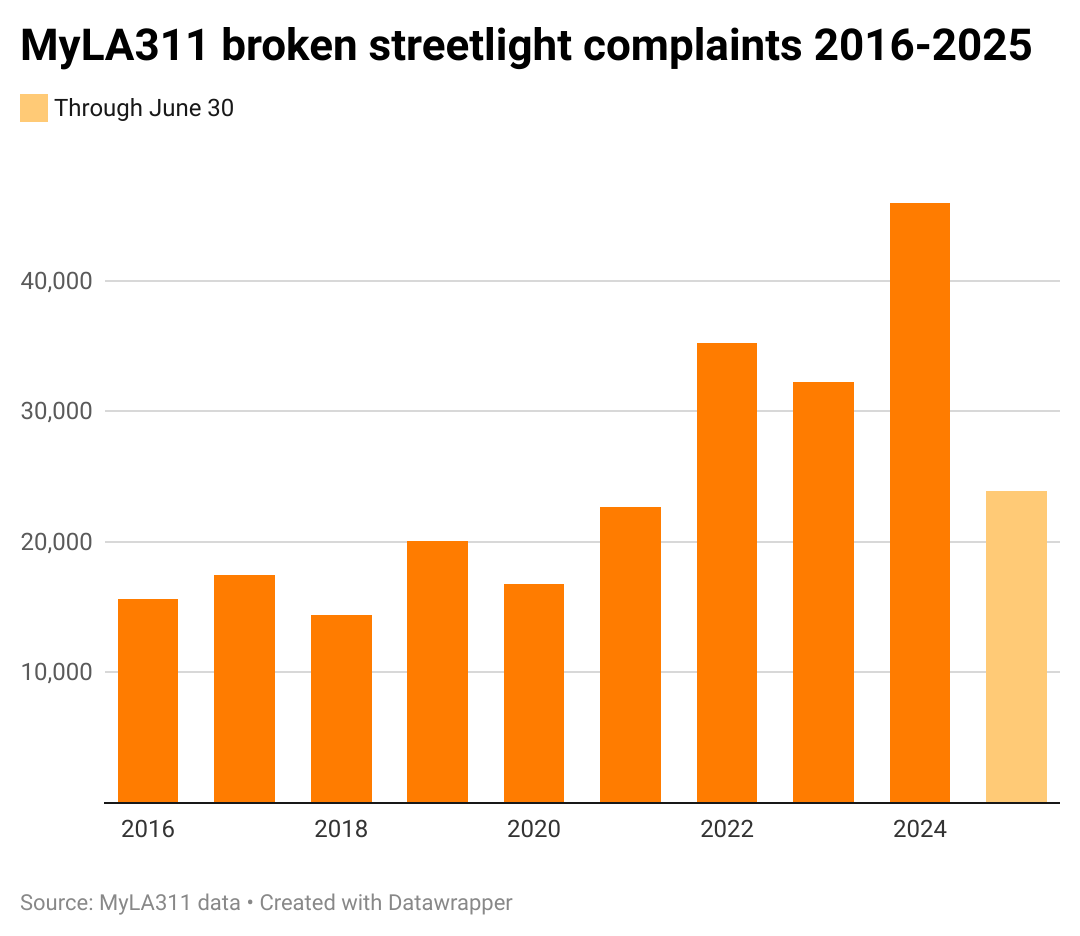
The Los Angeles Police Department created a “Heavy Metal Task Force” that targeted not only thieves, but also the network of scrap dealers who purchase the stolen wire.
Those efforts resulted in some big busts, and the number of complaints about darkened streetlights began to dip. In June, the city reported 2,873 outages, a sharp drop from the January peak of 5,200.
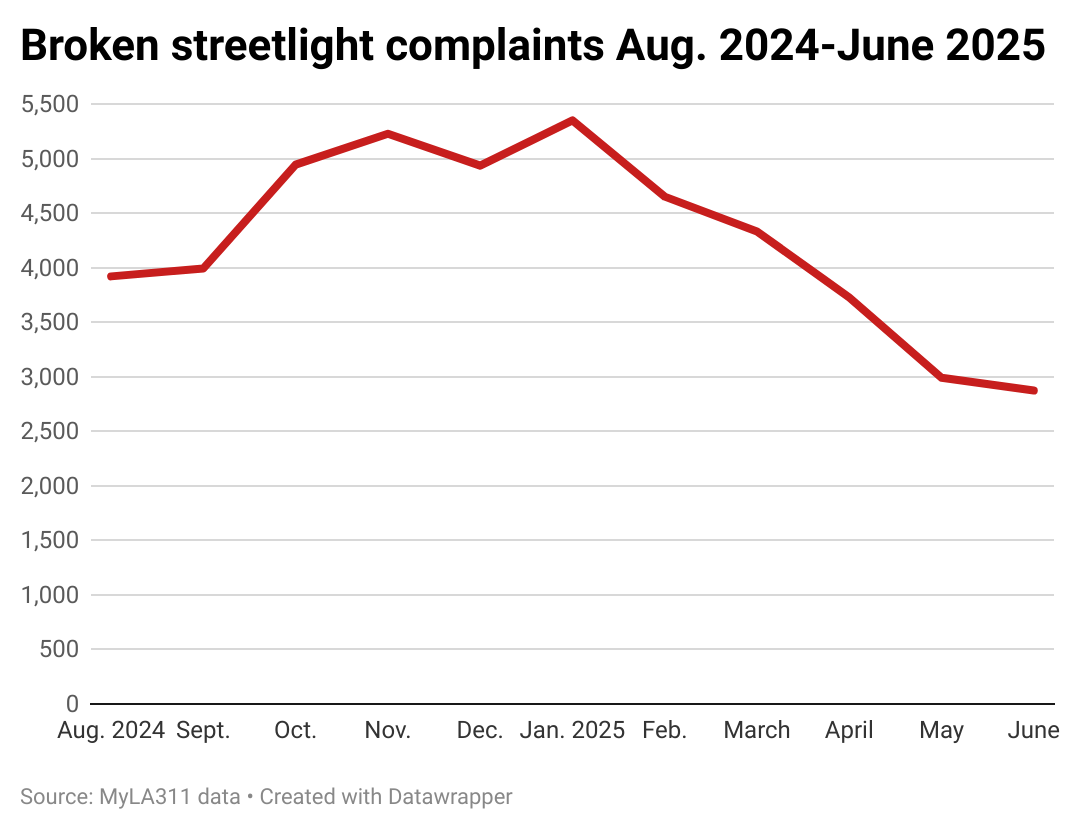
But the problem remains. In a June 5 bulletin, California Attorney General Rob Bonta outlined the crisis, noting that while thieves’ profit is just “several dollars per pound,” the damage to infrastructure costs municipalities exponentially more. The directive instructed police to use a set of laws on the books to go after thieves and scrap dealers.
“Because thieves damage the equipment housing copper wire in the course of stealing the wire, the cost to replace the copper wire can far exceed the value of the stolen wire,” said Bonita.
Waiting for a fix
Whatever happens with the copper market, for residents who return home to a dark sidewalk, there is no easy fix.
Mid-City West resident Greg Roth saw that when his neighborhood’s streetlights went out in December 2024. He filed multiple MyLA311 requests and left voicemails for two council members, but the lights weren’t restored until this June. He remains worried because the newly wired streetlight is just as unprotected as before.
“If somebody wanted to come back and steal the copper wires again, I don’t think that they would have much difficulty doing it,” Roth said. “So that’s a little bit, you know, disappointing and concerning.”
The problem has mobilized people like Jeanette Corcuera, a board member of the Miracle Mile Residential Association. Through a block captain network, they’ve documented approximately 90 outages in their area alone.
She personally reported nine outages along her block. Months later, only one has been repaired. “It’s the number one concern in the neighborhood right now,” Corcuera said. “It’s dangerous, our neighborhood is already prone to break-ins and home invasions.”
According to the Bureau of Street Lighting’s own estimates, the wait time to repair a streetlight runs more than six months. The agency plans to create rapid repair teams, install theft-resistant LED and solar-powered lighting, and expand surveillance technology to protect infrastructure.
In May, the Bureau of Street Lighting told Crosstown it had installed 300 solar streetlamps this year. However, it was unable to provide updated figures, or respond to written questions about streetlight maintenance rates or copper-theft prevention efforts ahead of the tariff changes.
How we did it: We analyzed six years of data from the MyLA311 service on streetlight repairs.
Have questions about our data or what to know more? Write to us as askus@xtown.la






